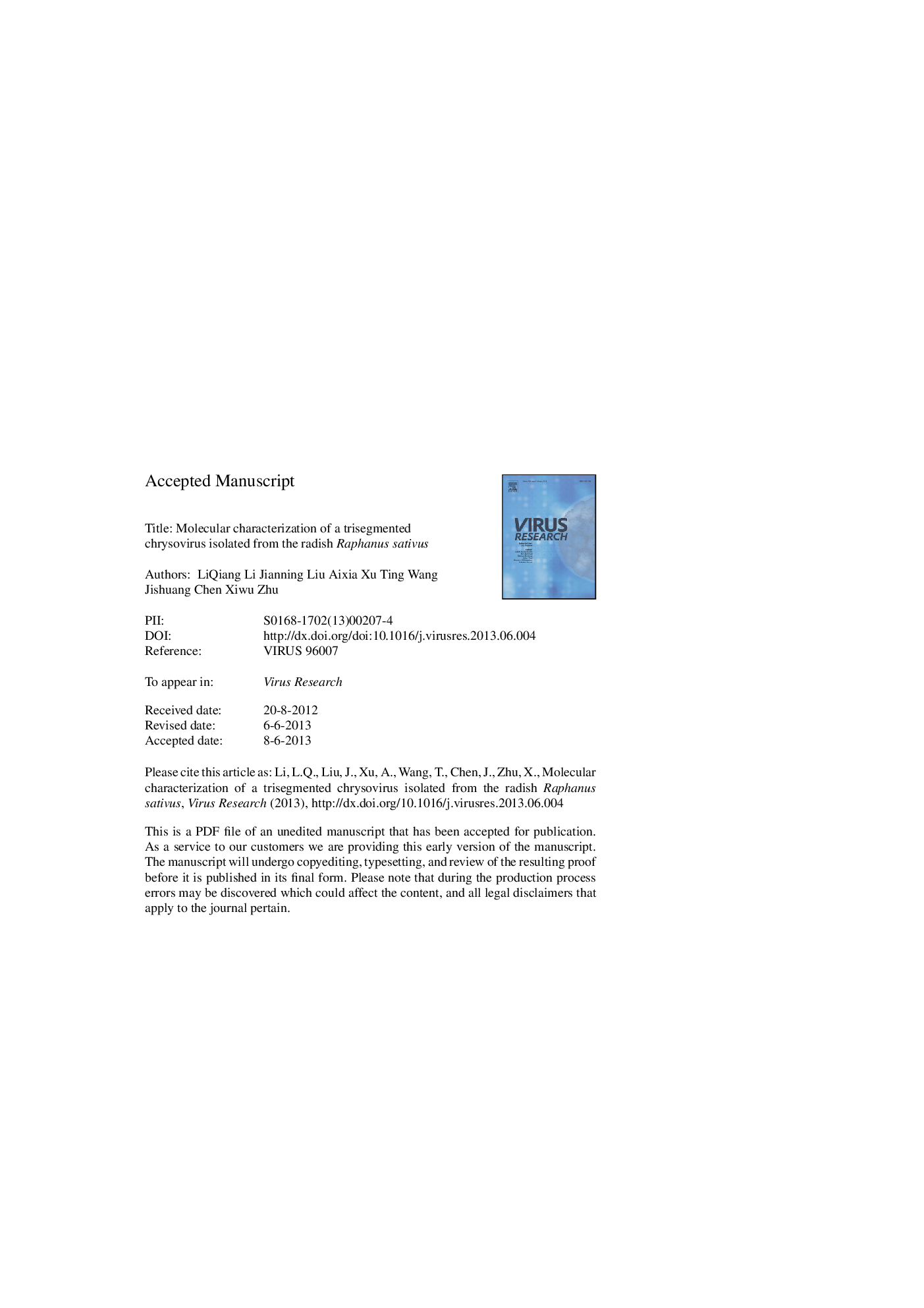| Article ID | Journal | Published Year | Pages | File Type |
|---|---|---|---|---|
| 6142977 | Virus Research | 2013 | 41 Pages |
Abstract
Radish (Raphanus sativus L.) is cultivated worldwide and is of agronomic importance. dsRNAs associated with partitiviruses were previously found in many R. sativus varieties. In this study, three large dsRNAs from radish were cloned using a modified single primer amplification technique. These three dsRNAs-of lengths 3638, 3517 and 3299 bp-shared conserved untranslated terminal regions, and each contained a major open reading frame putatively encoding the chrysoviral replicase, capsid protein and protease respectively. Isometric virus-like particles (VLP), approximately 45Â nm in diameter, were isolated from the infected radish plants. Northern blotting indicated that these dsRNAs were encapsidated in the VLP. The virus containing these dsRNA genome segments was named Raphanus sativus chrysovirus 1 (RasCV1). Phylogenetic analysis revealed that RasCV1 is a new species of the Chrysoviridae family and forms a plant taxon with another putative plant chrysovirus, Anthurium mosaic-associated virus (AmaCV). Furthermore, no fungal mycelia were observed in radish leaf tissues stained with trypan blue. These results indicated that RasCV1 is most likely a plant chrysovirus rather than a chrysovirus in symbiotic fungi. An exhaustive BLAST analysis of RasCV1 and AmaCV revealed that chrysovirus-like viruses might widely exist in eudicot and monocot plants and that endogenization of chrysovirus segments into plant genome might have ever happened.
Keywords
Related Topics
Life Sciences
Immunology and Microbiology
Virology
Authors
Liqiang Li, Jianning Liu, Aixia Xu, Ting Wang, Jishuang Chen, Xiwu Zhu,
